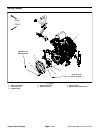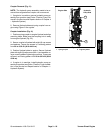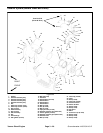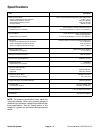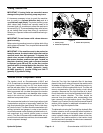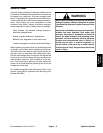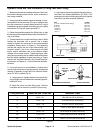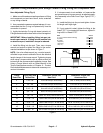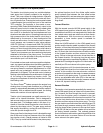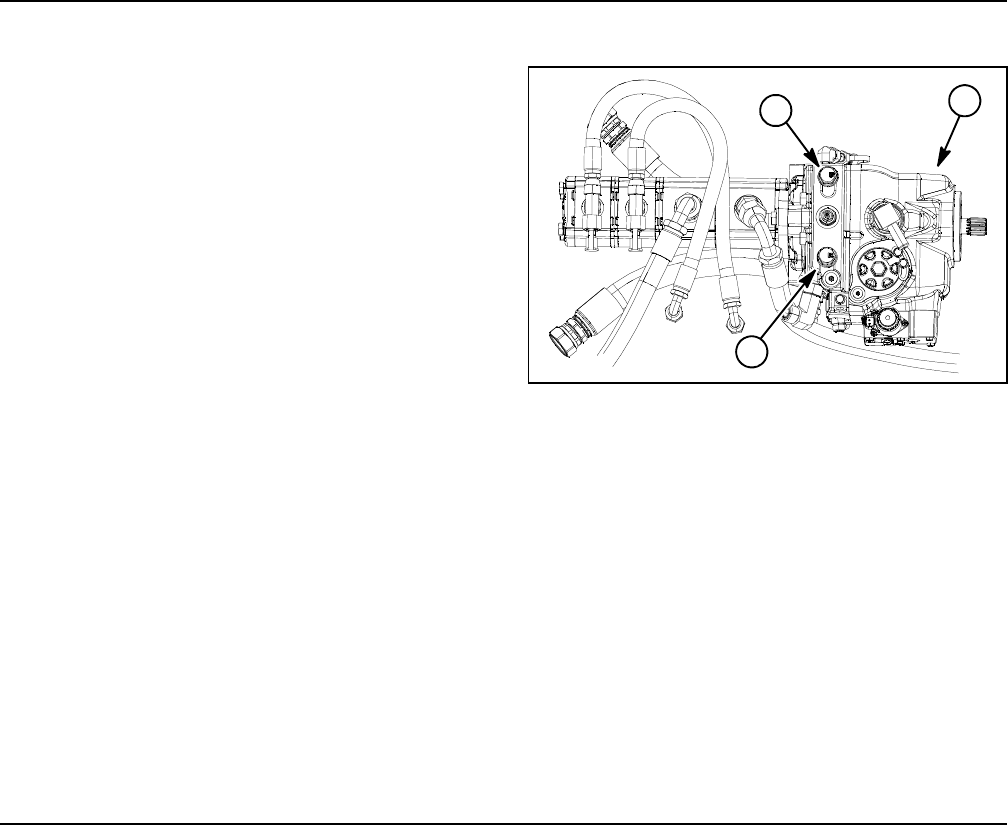
Groundsmaster 4100--D/4110--DHydraulic System Page 4 -- 4
Towing Traction Unit
IMPORTANT: If towing limits are exceeded, severe
damage to the piston (traction) pump may occur.
If it becomes necessary to tow (or push) the machine,
tow (or push) in a forward direction only and at a
speed below 3 mph (5 kph). The piston (traction) pump
relief valves (both forward and reverse) need to be
loosened three (3) revolutions to allow the machine to
be moved (Fig. 2). To prevent leakage from relief valves,
do not loosen them more than three (3) revolutions.
Refer to your Operator’s Manual fora dditional towing in-
structions.
IMPORTANT: Do not loosen relief valves when en-
gine is running.
Before returning machine to service, tighten both of the
relief valves until seated. Then, torque relief valves to 52
ft--lb (70 N--m).
IMPORTANT: If the machine must to be pushed or
towed in reverse, the check valve in the rear traction
manifold must also be bypassed. To bypass this
check valve, connect a hydraulic hose assembly to
the reverse traction pressure test port, located on
the piston (traction) pump, and on the port located
in--between ports M8 and P2 on the rear traction
manifold which is located behind the front tire. Use
Toro part numbers 95--8843 (hydraulic hose),
95--0985 (quantity 2) (coupler fitting) and 340--77
(quantity 2) (hydraulic fitting).
Figure 2
1. Piston pump
2. Relief valve (forward)
3. Relief valve (reverse)
1
2
3
Traction Circuit Component Failure
The traction circuit on Groundsmaster 4100--D and
4110--D machines is a closed loop system that includes
the piston (traction) pump, two (2) front wheel motors
and the rear axle motor. If a component in the traction
circuit should fail, debris and contamination from the
failed component will circulate throughout the traction
circuit. This contamination can damage other compo-
nents in the circuit so it must be r emoved to prevent
additional component failure.
The recommended method of removing traction circuit
contamination would be to temporarily install the Toro
high flow hydraulic filter (see Special Tools in this chap-
ter) into the circuit. This filter should be used when con-
necting hydraulic test gauges in order to test traction
circuit components or after replacing a failed traction cir-
cuit component (e.g. traction (piston) pump or wheel
motor). The filter will ensure that contaminates are re-
moved from the closed loop and thus, do not causeaddi-
tional component damage.
Once the Toro high flow hydraulic filter kit has been
placed in the circuit, raise and support the machine with
all wheels off the ground. Then, operate the traction cir-
cuit to allow oil flow throughout the circuit. The filter will
remove contamination from the traction circuit during
operation. Because the Toro high flow filter is bi--direc-
tional, the traction circuit can be operated in both the for-
ward and reverse direction. The filter should be
removed from the machine after contamination has
been removed from the traction circuit. See Filtering
Closed--Loop Traction Circuit in theService and Repairs
section of this chapter for additional information on us-
ing the Toro high flow hydraulic filter.
The alternative to using the Toro high flow hydraulic filter
kit after a traction circuit component failure would be to
disassemble, drain and thoroughly clean all compo-
nents, hydraulic tubes and hydraulic hoses in the trac-
tion circuit. If any debris remains in the traction circuit
and the machine is operated, the debris can cause addi-
tional circuit component failure.



